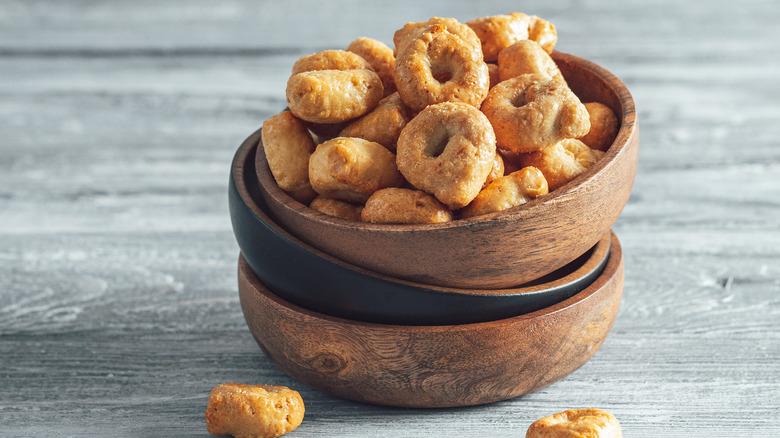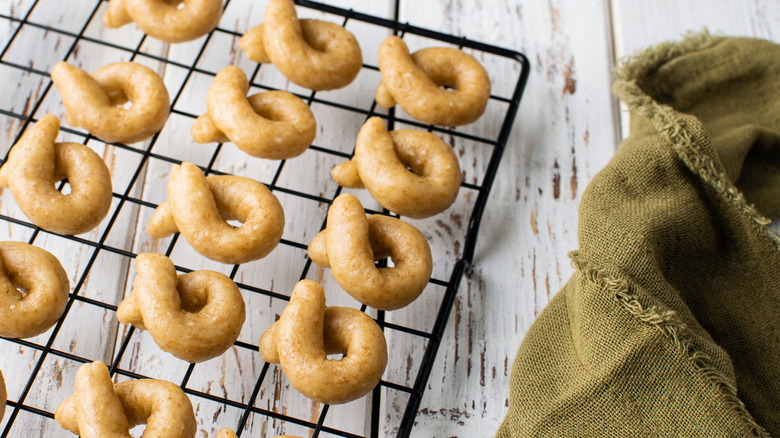The Important Step You Shouldn't Skip Before Making Taralli
Taralli is the ultimate Italian snack food. Like a fusion between a cracker and a pretzel, these crunchy breadstick-esque morsels hail from the southern region of Puglia but are beloved by all who taste them — seriously, it can be a challenge to only eat one. That said, if you want to stop buying taralli by the bagful and start making them at home, there's one non-negotiable in taralli making that any Apulian nonna will agree upon.
With origins that may trace as far back as the 8th century, Italy Segreta shares that taralli were a creation made from next to nothing. According to Visit Italy, legend has it that the first taralli were kneaded by a mother trying to feed her children using just a few kitchen staples like flour, olive oil, salt, and white wine. While they can now be made with anything from fennel seeds to chili flakes to dehydrated onions, nothing beats a classic tarallo.
Despite varying in flavor, taralli aren't always made in the same way either. For instance, Italy Bite explains that the almond and pepper-laced taralli napoletani undergo an entirely different cooking process, which drastically impacts their final texture. Consequently, in order to achieve that crunchy and almost-brittle texture of taralli pugliesi, you should never skip this one unique step.
Always boil taralli before baking
Crafting the best-tasting taralli starts with using the best ingredients, which is why choosing high-quality flour, extra virgin olive, salt, and wine is a must. Once you've gathered all of your ingredients, the process is fairly straightforward. After kneading everything together, Fine Dining Lovers recommends letting the dough rest before rolling strands into relatively thin rings and pinching the ends together with your fingertips. Now, comes the key step — boiling.
According to La Cucina Italiana, taralli must be immersed in a pot of boiling water until they float to the top — then, and only then can the rings be baked. While it might seem like a totally unnecessary step, it most definitely is not. Much like a pretzel or a bagel, MasterClass explains that boiling helps give taralli their iconic crisp texture and audible crunch. Basically, forgetting to double-cook means you'll be left with doughy taralli, and nobody wants that.
After baking, the sky's the limit for how you can enjoy taralli. Although there's no bad time to eat them, Italy Magazine shares that the crunchy rings are usually served during aperitivo alongside cheeses, olives, salumi, and, of course, a glass of vino like a berry-forward Primitivo. For the really adventurous, taralli can even be crumbled and used as a topping for pasta or as a tasty substitute for breadcrumbs!

